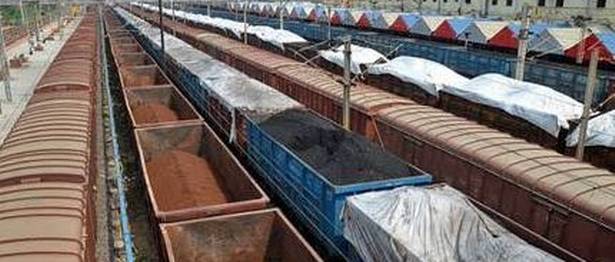07
Nov
2019
Dedicated rail corridor could hit toll collection on highways, says report
Even as the government pushes for a country-wide rail freight corridor, looking to emulate what other countries have done, infrastructure companies are facing lower toll collection revenues from the existing highways and delays in new project awards.
The government’s plan to collect Rs 1 lakh crore in toll revenues every year could be in danger. The reasons are manifold – from the slow-paced awarding of projects, to delayed receipt of the appointed date from the National Highways Authority of India (NHAI), the reasons are many. Appointed date is industry speak for the kick-off date for start of a project.
The delay in declaring appointed dates for the projects awarded, is primarily due to issues in land acquisition, Sachin Gupta – Senior Director, CRISIL Ratings.
Shift of freight from road to rail
The shift of freight movement from road to dedicated rail freight corridors is expected to have an adverse impact on toll collection on the Delhi-Mumbai NH-8 route, industry watchers say.
Ratings agency ICRA in a report said that while the completion of the eastern and western dedicated freight corridors are expected to be game changers, the operationalisation of the western dedicated freight corridor in 2022 is likely to witness a one-time reduction in toll collection by 11 per cent once, due to the shift in automobile, cement and container freight to this corridor, the ratings agency said.
While the Centre has proposed rail corridors (operational only in parts) to connect the West-North-East of the country, four more corridors connecting North-South (Delhi-Tamil Nadu), East-West (West Bengal-Maharashtra), East-South (West Bengal-Andhra Pradesh) and South-South (Tamil Nadu-Goa) are in the planning stage. These initiatives have been taken to ensure higher efficiency in the rail network, as freight is a significant revenue generator for the railways.
Road infrastructure
A combination of factors, including under-investment in the rail infrastructure sector, has resulted in roads emerging as the predominant means of freight transportation. “Inadequate rail infrastructure capacity, with poor connectivity, had resulted in roads being the dominant mode of transport even for low-value, bulky goods, which are usually transported on rail in preference to road, pointed out Shubham Jain, Senior Vice President & Group Head, Corporate Ratings, ICRA.
A similar trend is expected to play out in the eastern dedicated freight corridor, where toll collections in the Delhi–Kolkata NH-2 route will see a 6 per cent decline, ICRA said.
As the eventual shift to rail happens, the road sector could feel its own pain, in existing corridors such as Mumbai-Delhi and Delhi-Kolkata, which carry goods worth crores every day. “There is concern on how collections will be impacted, especially whether passenger revenue can fill the gap created by freight revenue,” said an executive from an infrastructure company.
“The decline in toll collections on account of this shift (from both these routes) would adversely affect the Rs 6,565-crore of debt in two of the eight operational Build Operate Transfer (BOT) projects,” said Jain. However, six of the remaining projects will complete their concession periods during 2021-2023, and competition from the dedicated rail corridor is expected to have minimal effect on them. For the other two projects, which are expected to come under stress, the concession period is financial year 2027 and 2040.
Similarly, there are three BOT (Toll) road projects on the Delhi–Kolkata route, with debt outstanding of Rs 4,508 crore, which are likely to be affected, the ratings agency added.
Recently, India Ratings had rated the Indian roads sector as stable-negative, citing the above-mentioned concerns.
India’s dependence on roads for freight transportation is huge when compared to other countries. The US and China rely much lesser on road for freight transportation, when compared to India. For example, 30 per cent of US shipments come from road as against 40 per cent in China. In India, the figure is 60 per cent.






































































































